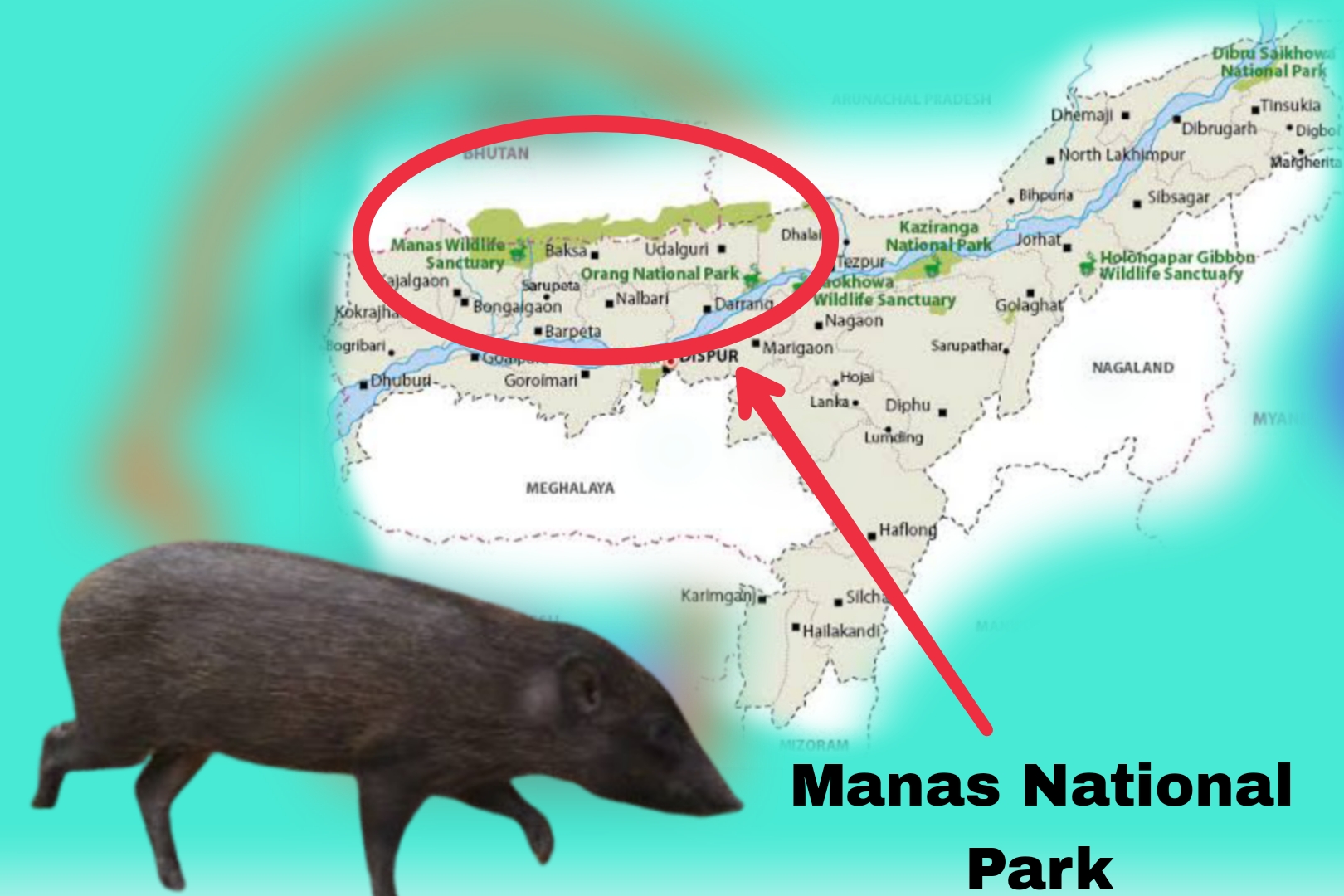
Pygmy Hog
1. Introduction to Pygmy Hog:
- The pygmy hog (Porcula salvania) is one of the smallest and rarest wild pigs, with unique ecological importance and conservation status.
- Known for its distinct small size and behavior, it serves as an indicator species for grassland ecosystems, meaning its presence or absence helps gauge the health of its environment.
2. Habitat and Range:
- Current Habitat: The only viable population of pygmy hogs in the wild is found exclusively in the Manas Tiger Reserve in Assam.
- Past Range: Historically, the species was more widespread, inhabiting the tall, wet grasslands of the Himalayan foothills, stretching across India, Nepal, and Bhutan.
3. Conservation Status:
- IUCN Classification: The pygmy hog is listed as Critically Endangered on the IUCN Red List, making it one of the most threatened mammals globally.
- Factors Leading to Endangerment: Habitat destruction, particularly due to human encroachment, agriculture, and grassland degradation, has contributed to its drastic population decline.
4. Conservation Efforts:
- Captive Breeding Program: The Pygmy Hog Conservation Program (PHCP) aims to restore populations through captive breeding and reintroduction. The program, which has successfully bred pygmy hogs in captivity, periodically releases them into protected areas.
- Key Supporters: The program has been supported by various wildlife organizations, including the Assam Forest Department, IUCN/SSC Wild Pig Specialist Group, and Durrell Wildlife Conservation Trust.
5. Importance of Grassland Ecosystems:
- Pygmy hogs depend on undisturbed tall grasslands. Their survival is tied to the health of this ecosystem, which supports various other endangered species as well, such as the Bengal florican.
- Protecting the pygmy hog indirectly supports conservation efforts for other species and the overall biodiversity of the grassland habitats.
Manas National Park: A Treasure of Biodiversity
Location and Geography
Manas National Park is situated at the foothills of the Himalayas in Assam, India. It shares its borders with the Royal Manas National Park in Bhutan, creating a larger conservation area across the two countries. The park is named after the Manas River, a major tributary of the Brahmaputra River, which flows through it. Additionally, the Beki River also traverses the park, adding to its scenic beauty and ecological importance.
Special Designations
Manas National Park is not just a protected area; it is recognized globally for its ecological and biodiversity value. It holds multiple prestigious titles:
- UNESCO Natural World Heritage Site
- Tiger Reserve
- Elephant Reserve
- Biosphere Reserve
- Important Bird and Biodiversity Area (IBBA)
Climate and Vegetation
The park experiences a tropical monsoon climate, characterized by distinct wet and dry seasons. Its vegetation is diverse, including:
- Semi-evergreen forests
- Mixed moist and dry deciduous forests
- Alluvial grasslands
- Creeper swamp forests
This variety of ecosystems supports a rich array of wildlife.
Wildlife and Endemic Species
Manas is home to a wide range of animal species, including some that are rare, endangered, or found only in this region. Key species include:
- Large Mammals: Asiatic elephant, Bengal tiger, greater one-horned rhinoceros, clouded leopard, sloth bear.
- Endemic Species: Pygmy hog, hispid hare, golden langur.
- Birdlife: The park is a critical habitat for the endangered Bengal florican.
Conservation and Protection
Under the Indian Wildlife Protection Act, over 22 species listed under Schedule 1—the highest level of protection—are found in Manas National Park. These include the greater one-horned rhinoceros, swamp deer, pygmy hog, hispid hare, golden langur, and Bengal florican. The park provides vital habitats for these species, ensuring their survival in the wild.
Manas National Park is not just a haven for wildlife; it is also a symbol of effective conservation efforts and ecological richness, making it a place of global significance.
Multiple Choice Questions (MCQs)
1. The only viable wild population of pygmy hogs can be found in which location?
Correct Answer!
Incorrect Answer!

2. The IUCN Red List classifies the pygmy hog as:
Correct Answer!
Incorrect Answer!
3. Which of the following actions are part of the conservation strategy for pygmy hogs?
Correct Answer!
Incorrect Answer!
_
